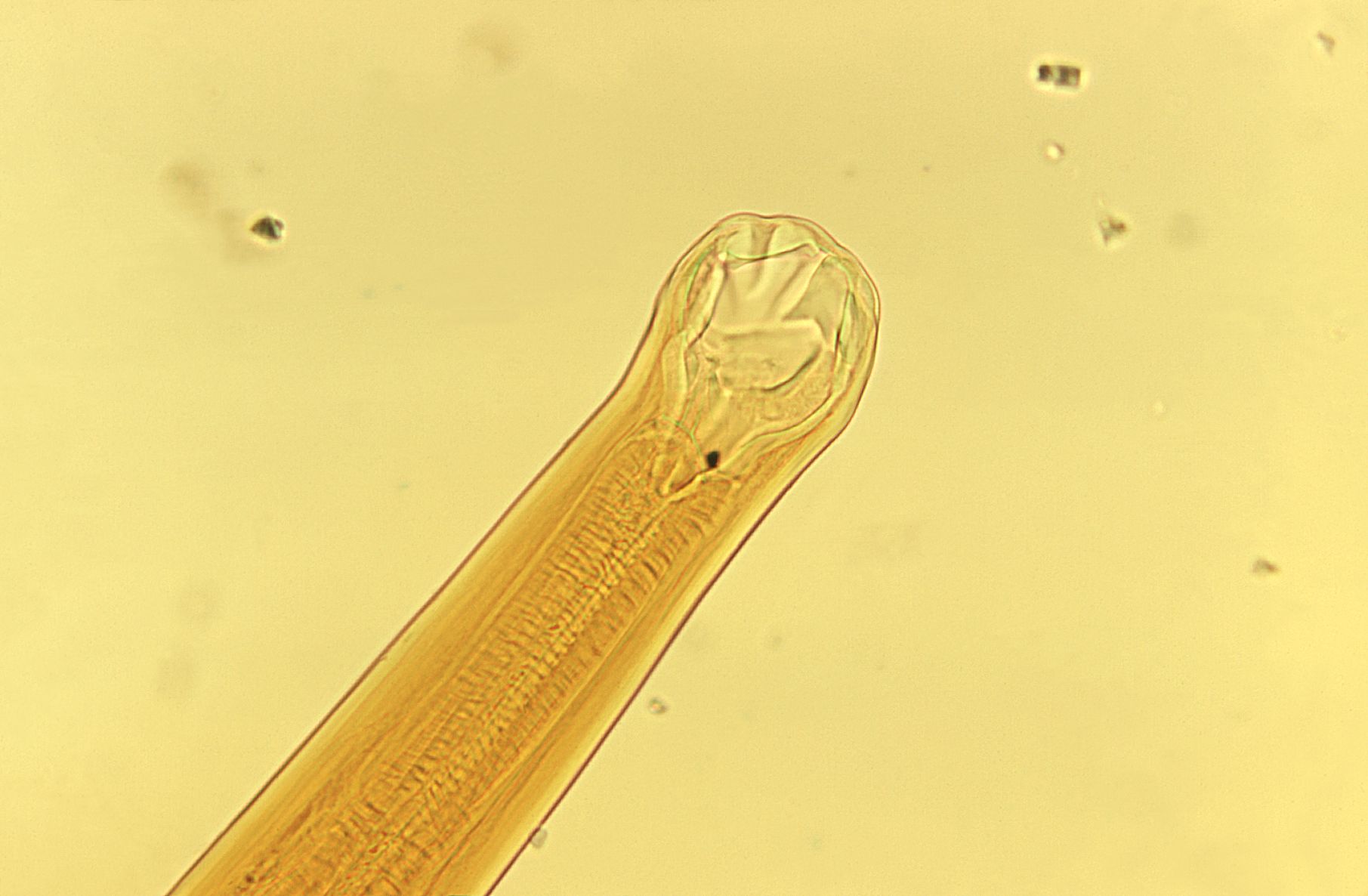Ancylostomiasis laboratory findings
Jump to navigation
Jump to search
|
Ancylostomiasis Microchapters |
|
Diagnosis |
|---|
|
Treatment |
|
Case Studies |
|
Ancylostomiasis laboratory findings On the Web |
|
American Roentgen Ray Society Images of Ancylostomiasis laboratory findings |
|
Risk calculators and risk factors for Ancylostomiasis laboratory findings |
Editor-In-Chief: C. Michael Gibson, M.S., M.D. [1] Associate Editor(s)-in-Chief: Kalpana Giri, MBBS[2]
Overview
The diagnostic test of ancylostomiasis is the microscopic detection of hookworms eggs in stool. Other lab findings include: decreased hemoglobin, eosinophilia, Presence of several live and motile worms in upper gastrointestinal endoscopy.
Laboratory Findings


The diagnostic test of ancylostomiasis is the microscopic examination of stools that detected the presence of hookworms eggs.[1]
- Laboratory findings consistent with the diagnosis of ancylostomiasis include:[2]
- Iron-deficiency anemia (decreased hemoglobin)
- Eosinophilia
- Presence of several live and motile worms in upper gastrointestinal endoscopy which is easily extracted using standard biopsy forceps.
References
- ↑ Umbrello G, Pinzani R, Bandera A, Formenti F, Zavarise G, Arghittu M; et al. (2021). "Hookworm infection in infants: a case report and review of literature". Ital J Pediatr. 47 (1): 26. doi:10.1186/s13052-021-00981-1. PMC 7871578 Check
|pmc=value (help). PMID 33563313 Check|pmid=value (help). - ↑ AbdAllah M (2019). "ANCYLOSTOMIASIS CAUSING UPPER GASTROINTESTINAL BLEEDING: REAL-TIME ENDOSCOPIC PICTURES". Gastroenterol Nurs. 42 (2): 179–180. doi:10.1097/SGA.0000000000000423. PMID 30946305.